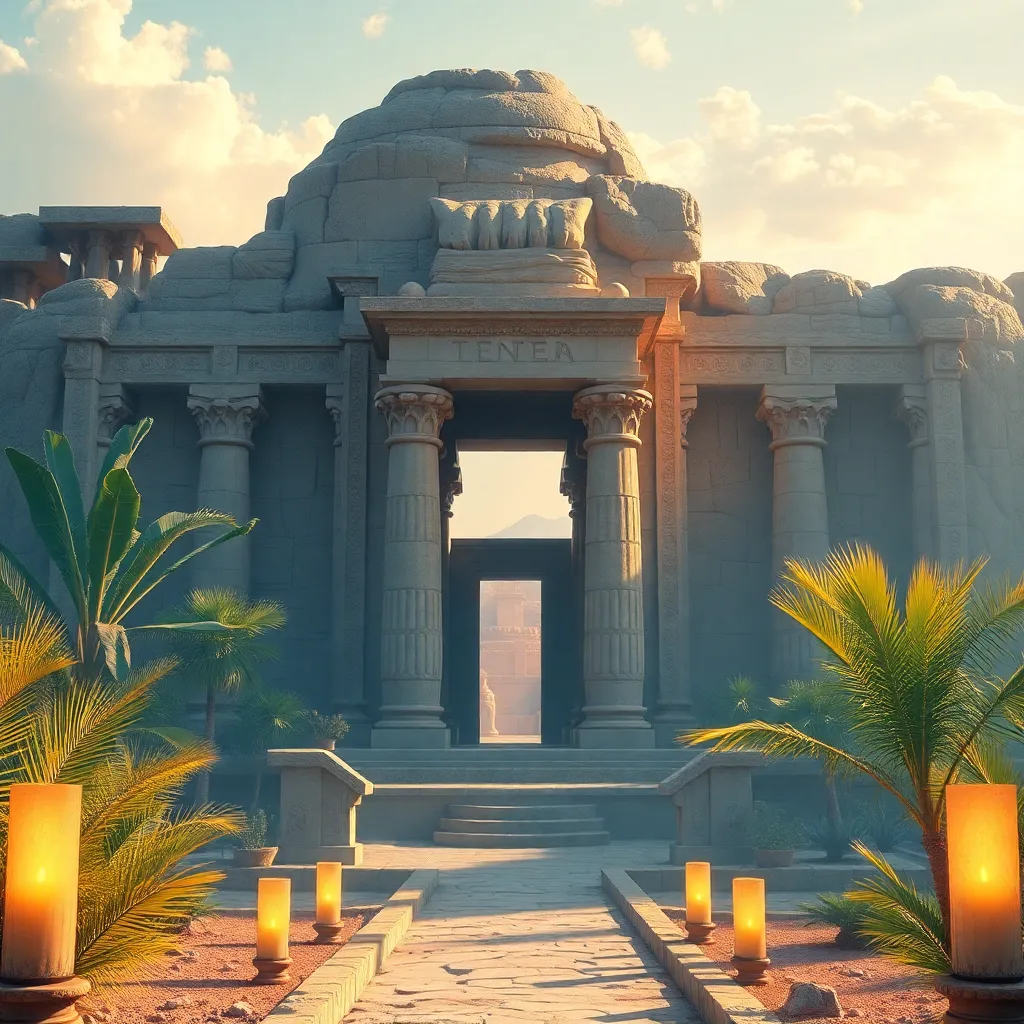Exploring the Sacred Gardens of Ancient Egypt
I. Introduction to the Sacred Gardens of Ancient Egypt
The sacred gardens of ancient Egypt played a pivotal role in the cultural and spiritual life of the Egyptians. These lush, green spaces were not merely aesthetic; they were deeply intertwined with the religious beliefs and practices of the time. Gardens served as places of worship, reflection, and connection to the divine, symbolizing the eternal cycle of life and death.
In ancient Egypt, sacred gardens could be categorized into various types, including temple gardens, mortuary gardens, and private gardens that held spiritual significance. Each of these gardens was designed to foster a connection between the natural world and the divine, reflecting the Egyptians’ reverence for nature and its cycles.
II. Historical Context: Gardens in Ancient Egyptian Society
Gardens were integral to daily life in ancient Egypt, serving not just as sources of food and beauty but also as spiritual sanctuaries. They represented life, fertility, and the afterlife, playing a crucial role in the Egyptians’ worldview.
In a society that revered the Nile and its life-giving properties, gardens symbolized the bounty of nature and the blessings of the gods. They were often associated with the goddess Isis, who was linked to fertility and rebirth. The presence of gardens in temples and tombs underscored their significance in both earthly and spiritual realms.
III. Architectural Design and Layout of Sacred Gardens
The architectural design of sacred gardens in ancient Egypt was characterized by several common features:
- Symmetry and Order: Gardens were meticulously planned, often featuring symmetrical layouts that reflected the Egyptians’ appreciation for balance and harmony.
- Water Features: Many gardens included ponds, canals, or fountains to represent the life-giving properties of the Nile.
- Plant Beds: Raised plant beds were common, allowing for a diverse array of flora to flourish.
- Shaded Walkways: Trees and trellises were strategically placed to provide shade, creating cool retreats for contemplation and worship.
Religious beliefs significantly influenced garden designs. For instance, gardens dedicated to the gods often featured specific plants that held symbolic meanings, and their layouts were aligned with celestial bodies to honor divine forces.
IV. Notable Sacred Gardens and Their Locations
Throughout ancient Egypt, several notable sacred gardens have been documented, particularly in connection with temples and tombs:
- Temple Gardens: Gardens at temples such as Karnak and Luxor were designed for ritual purposes, providing a serene environment for worshippers.
- Mortuary Gardens: These gardens, often located adjacent to tombs, were believed to facilitate the deceased’s journey to the afterlife.
- The Garden of Amun-Ra: Located at the Karnak temple complex, this garden was dedicated to the chief deity Amun-Ra and featured a variety of sacred plants.
Each of these gardens served as a testament to the ancient Egyptians’ profound respect for nature and their belief in the interconnectedness of life and the divine.
V. Flora and Fauna: Plants of the Sacred Gardens
The flora of ancient Egyptian sacred gardens included a diverse array of plants, each with its own significance:
- Lotus: Symbolizing purity and rebirth, the lotus was revered and often depicted in art.
- Papyrus: This plant was essential for making paper and was associated with the Nile, representing life and growth.
- Willow: Often linked to mourning and the afterlife, willows were commonly found in mortuary gardens.
- Fruit Trees: Figs and dates were cultivated for their nourishment and were associated with fertility.
These plants not only provided sustenance but also played significant roles in religious rituals and mythological narratives, reinforcing the connection between nature and spirituality in ancient Egyptian culture.
VI. Rituals and Ceremonies Associated with Sacred Gardens
Sacred gardens were central to various religious practices and rituals in ancient Egypt. They served as venues for:
- Ritual Offerings: Worshippers would present offerings of food and flowers in gardens as acts of devotion to the gods.
- Seasonal Festivals: Celebrations such as the Opet Festival involved processions through temple gardens, highlighting their importance in community life.
- Funerary Rites: Mortuary gardens played a critical role in burial practices, providing a sacred space for mourning and remembrance.
The gardens were imbued with spiritual energy, serving as a bridge between the earthly and the divine, allowing for communion with the gods and honoring the deceased.
VII. Preservation and Modern Exploration of Ancient Gardens
Today, efforts to preserve the remnants of ancient sacred gardens are underway, with archaeologists and historians working to uncover their historical significance. Preservation efforts include:
- Excavation: Archaeological digs aim to uncover the foundations of ancient gardens and their associated structures.
- Reconstruction: Some sites are being reconstructed to give a glimpse of their former glory.
- Research: Ongoing studies focus on understanding the botanical diversity and ecological significance of these ancient spaces.
The preservation of these gardens is crucial not only for historical understanding but also for their cultural legacy, providing insights into the ancient Egyptians’ relationship with nature and the divine.
VIII. Conclusion: The Legacy of Sacred Gardens in Ancient Egypt
The sacred gardens of ancient Egypt hold a lasting legacy that reflects the cultural and spiritual values of one of history’s most fascinating civilizations. They symbolize the Egyptians’ deep respect for nature, their belief in the afterlife, and their intricate relationship with the divine.
Moreover, the influence of these ancient gardens can be seen in modern gardening and landscape design, where elements of symmetry, water features, and the incorporation of native plants continue to evoke the beauty and tranquility of sacred spaces. The legacy of the sacred gardens endures, reminding us of the profound connections between nature, spirituality, and human experience.




